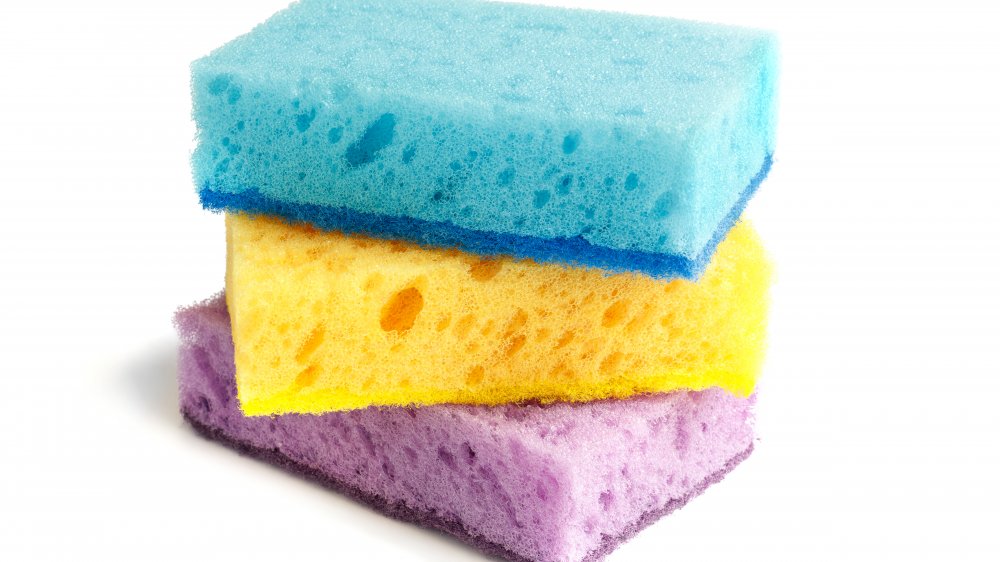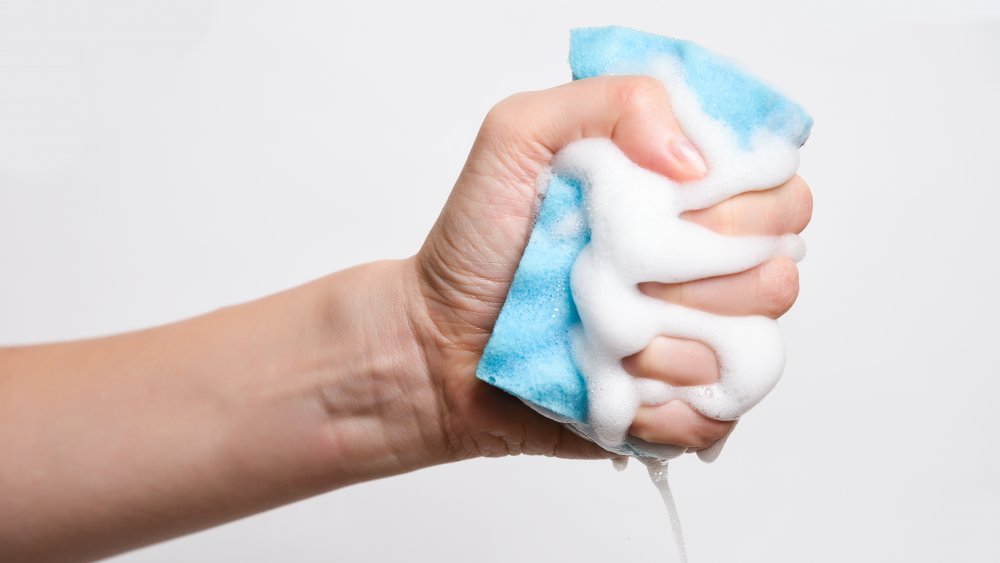Here's How Dirty Kitchen Sponges Really Are
Everyone knows kitchen sponges can get dirty, but it may be surprising to learn just how dirty they really are. A study conducted at the University of Furtwangen in Germany found 362 different species of bacteria on a sponge (via Scientific Reports). The density of the bacteria was up to 45 billion per square centimeter — which is really high (via NPR).
Cleaning a kitchen sponge can be problematic. There are different ways that have been suggested, such as microwaving the sponge, but the study found that did not work for all bacteria. Instead, it is better to discard your sponge and replace it with a new one if it starts to smell (via The New York Times).
Kitchen sponges frequently contain more active bacteria than anywhere else in a house — including the toilet. Among the bacteria that can live on sponges are E. Coli and salmonella, the two big ones most people associate with food poisoning (via Time).
One of the problems with microwaving a sponge is the temperature. Microwaves vary in temperature, and too little heat or time can have the opposite effect and create conditions that result in an increase of bacteria. Instead, letting a sponge dry completely is one of the easiest ways to prevent bacteria, as moisture creates an ideal environment for bacteria to multiply.
Keeping a sponge clean
To prevent a sponge from becoming infested with bacteria, don't use it to scrub food debris, wipe up meat juice, to clean dirt from fruits and vegetables, or clean up unpasteurized milk. Instead, use a cleanser or running water with a paper towel for those cleansing needs.
Microwaving a sponge, putting it in the dishwasher, or soaking it in vinegar may get rid of some bacteria, but no method is 100 percent effective in getting rid of it all. The researchers found that more of the potential pathogens, such as bacteria called Moraxella osloensis, showed up on the sponges of people who said they regularly disinfect them. The best method of keeping a sponge clean is to simply get rid of it at least once or week or when it starts to smell bad, whichever comes first. There is no getting around this if you want a sponge without bacteria.
Throwing away sponges weekly obviously means you will go through a lot of sponges. Instead, there are more environmentally-friendly alternatives that can be used, such as washcloths, which are used to clean dishes in restaurants. They soak up less water, have smaller inner surfaces, and dry faster, making them a better tool for cleaning.

